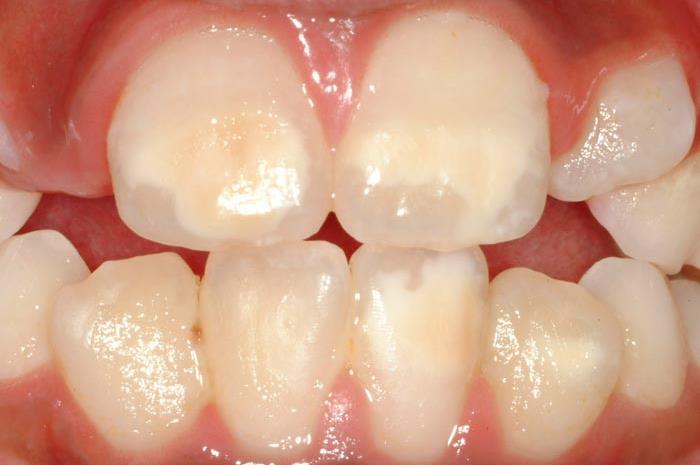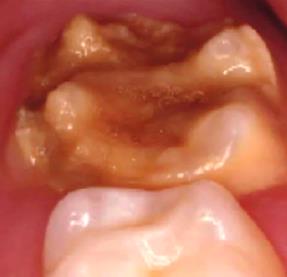What is MIH and what caused my child to have it?

MIH is a common condition affecting one in eight children in the UK. In teeth affected by MIH, the outer layer (enamel) of the tooth doesn’t form properly. This means it can be sensitive, crumbly and more prone to tooth decay. Teeth may appear “chalky” or discoloured with a cream, yellow or brown appearance.
It most commonly affects one, some or all four of the back first adult molar teeth, which come through around the age of six years. It can also affect the front teeth. Teeth are not necessarily equally affected, and the front teeth usually do not have the same loss of enamel as the molars. Other adult teeth are unlikely to be affected.

The cause of MIH is not fully understood. It is thought to be caused by a disturbance whilst these teeth are developing. This happens around the time of birth or within the first few years of life. Childhood illness, high fever or difficult births are some of the things that may cause these disturbances.
What can I do at home?
Brushing regularly with fluoride toothpaste, restricting sugar in your child’s diet and regularly attending your dentist are especially important if your child has MIH. Applying tooth mousse First adult molar (back) tooth affected by MIH (which can be purchased online) to affected teeth at home can help with sensitivity (this cannot be used if your child has a cow’s milk allergy)
Treatment
Treatment options will depend on several factors and your dentist will discuss these with you to find the best option for your child.
Back teeth
Treatment will depend on how sensitive or broken down the teeth are, the current age of your child, whether the teeth are likely to last into adulthood and whether there are any missing teeth.
Your dentist may advice simple temporary fillings (which don’t involve any numbing) to try and keep the tooth until your child is a little bit older before making a permanent decision.
Some permanent treatment options include:
- plastic coatings
- white fillings
- tooth removal
- If the tooth is of poor quality, it may be beneficial to remove the tooth, which if done at the right age gives the adult teeth behind the best chance to close the gap.
- If taking out an affected bottom back tooth, in some cases it might be advisable to remove the opposing top back tooth, even if it is healthy, to prevent future issues with your child’s bite.
Front teeth
Treatment options for front teeth in children include:
- special polishing technique to help improve the appearance
- white fillings – covering the affected area or in some cases the whole tooth
- tooth whitening – currently can only be done when over the age of 18
If you have any questions, please ask one of our dentists or contact our department.
For further information
Contact details: Child Dental Health Department, Newcastle Dental Hospital, Richardson
Road, Newcastle Upon Tyne NE2 4AZ Tel: 0191 2825110 (8.30am to 5pm) Monday – Friday
PALS (Patient Advice and Liaison Service) for help, advice and information about NHS
services. You can contact them on freephone 0800 032 02 02, email [email protected] or text to 07815 500 015.
Useful websites
If you would like further information about health conditions and treatment options, you may wish to have a look at the NHS website at www.nhs.uk
If you would like to find accessibility information for our hospitals, please visit
www.accessable.co.uk